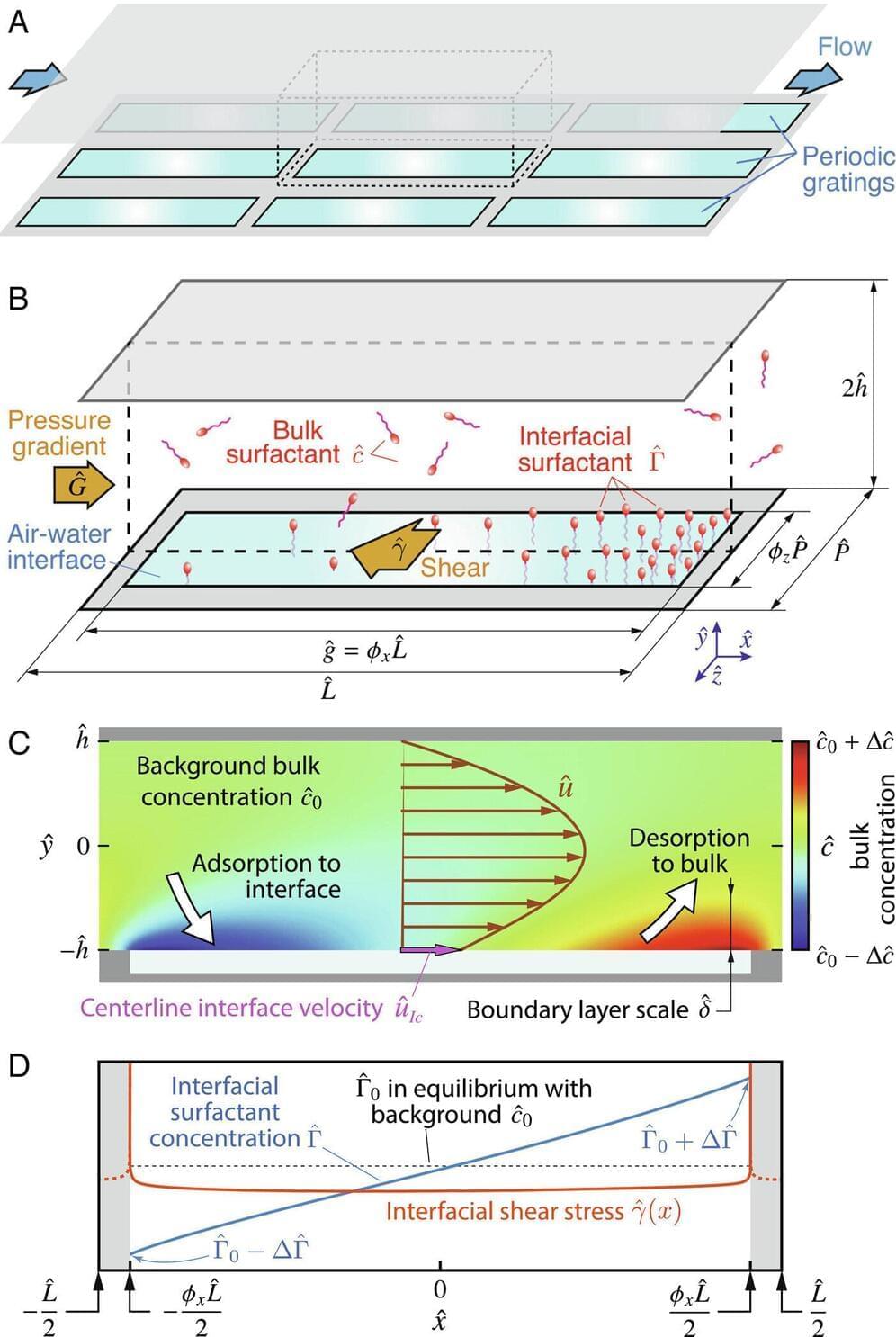Sometimes, the most complex problems can be solved with the simplest approaches. Such was the case for researchers at UC Santa Barbara as they tried to resolve a longstanding issue of fluid friction—the resistance between an object moving through fluid, or conversely, a stationary object with fluid flowing around or through it. It’s also known as drag.
“We had built a theory, but it was a very messy problem,” said mechanical engineering professor Paolo Luzzatto-Fegiz. Their problem dealt in particular with superhydrophobic surfaces (SHS), which are seen as a potential solution to the problem of drag, a phenomenon that reduces the efficiency of things traveling through water, like cargo ships, and increases the energy expenditure to pump liquids through pipes.
Their calculations for an effective SHS encompassed 10 complex parameters, but as it turns out, the ability to predict if an SHS will perform as intended boils down to just one. Their research is published in the Proceedings of the National Academy of Sciences.










Comments are closed.